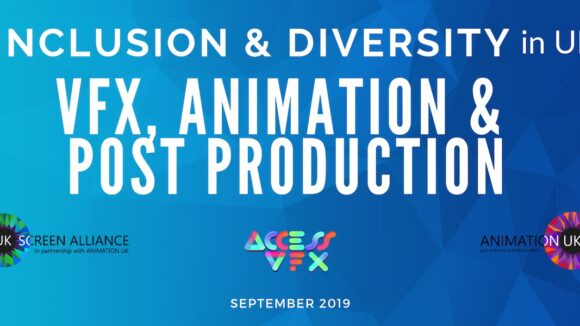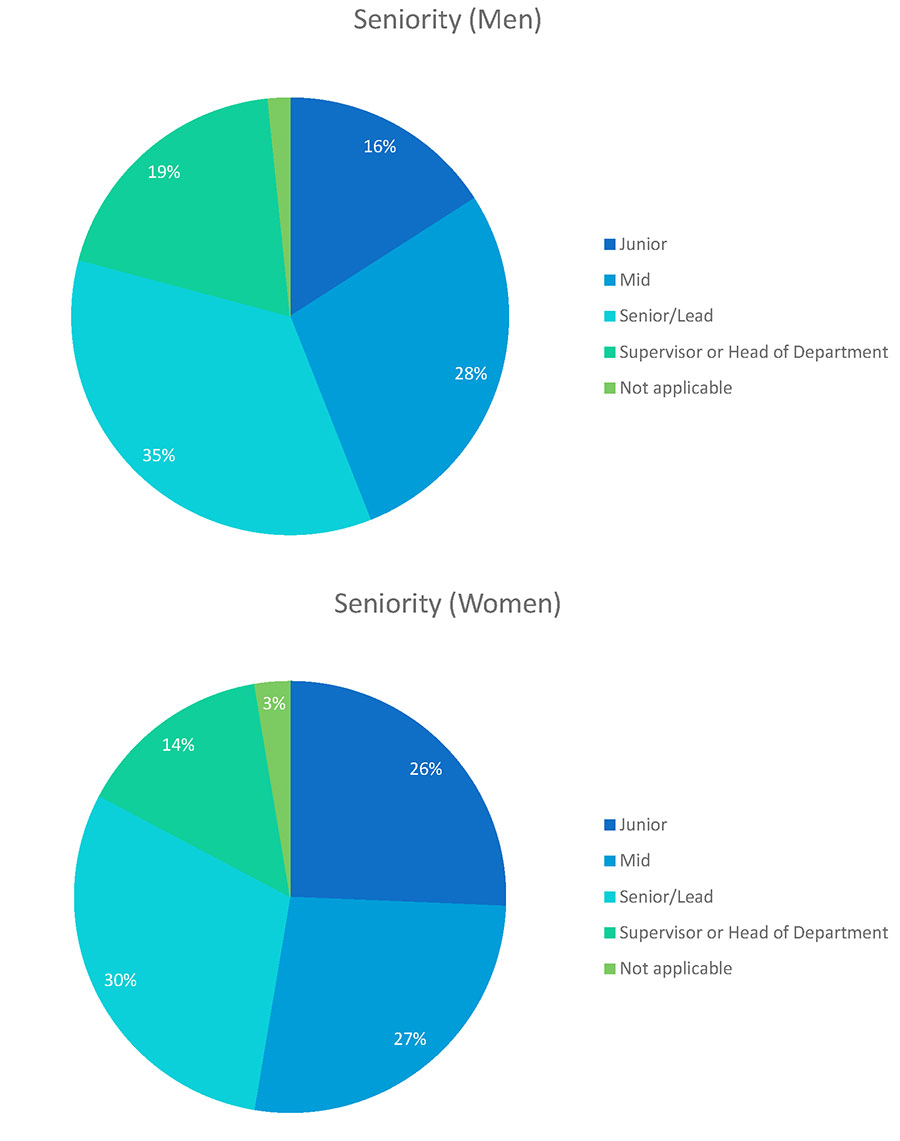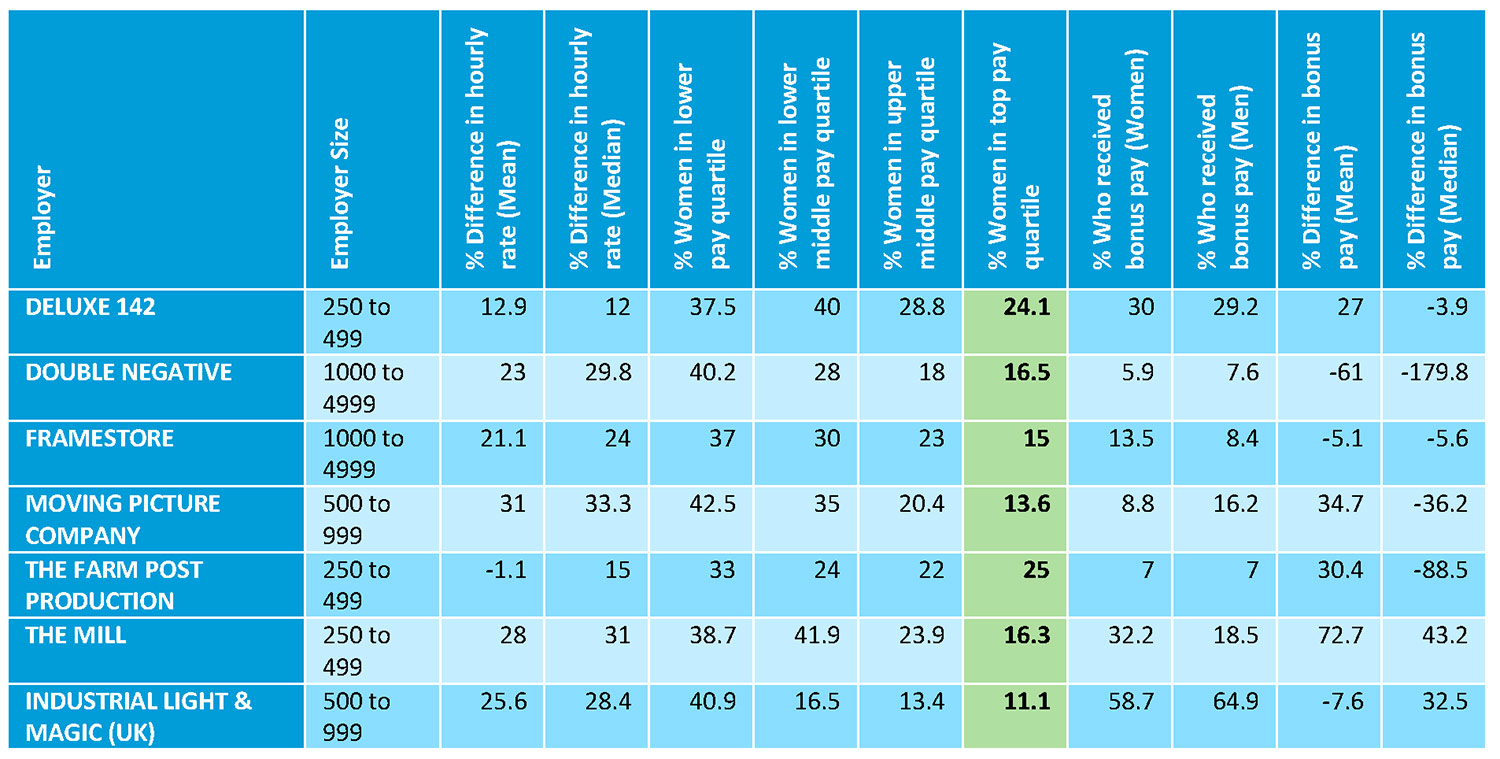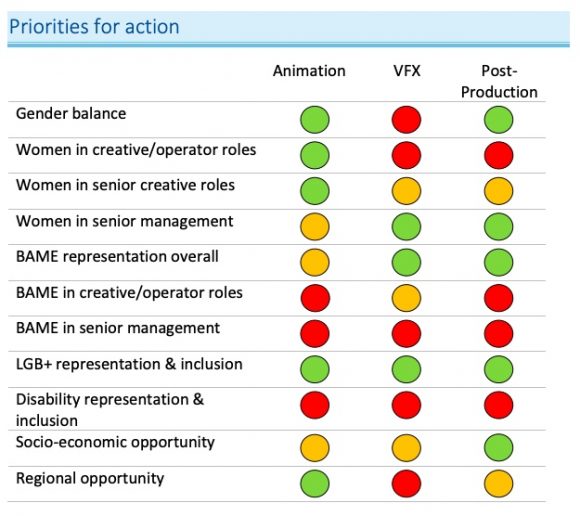

New Study Claims U.K.’s Animation Sector Has Achieved Gender Parity, While VFX Gender Pay Gap Is Wide
The most thorough report yet on diversity in the U.K.’s animation, vfx, and post-production sectors has thrown up a wealth of statistics — and some surprising results. The research found that women now make up half of the animation workforce, and that people of color are better represented across these sectors than in the film and television industry at large.
The report was conducted by UK Screen Alliance, in partnership with Animation UK and Access:VFX. More than 1,150 workers were surveyed.
Ethnicity
It is often said that the U.K.’s film industry as a whole is only 3% BAME (black, Asian, and minority ethnic). However accurate that figure might be, it’s thrown into perspective by this report, which found that 18% of the workforce across these three sectors is BAME. This breaks down to 19% in vfx, 18% in post-production, and 14% in animation.
These figures outstrip the 14% figure for BAME representation across the U.K.’s working-age population. In London, where the vfx industry is concentrated, that number is 40% — but, as the report points out, vfx companies recruit globally, not locally. Factoring in the regions from which employees are recruited, the report concludes that the vfx sector exceeds the target for proportionate representation of non-white people; animation and post-production narrowly miss it.
On a more granular level, the results are less encouraging. For instance, BAME employees only fill 8% of senior management roles (although the report adds that some results at this level have a wide margin of error due to small sample sizes).

Gender
Of the three sectors, only animation has reached gender parity. Women account for 51% of employees (men are at 46%, with the remaining 3% identifying as transgender, non-binary, or another description). In production management, the proportion of women jumps to 89%; in technical support, it plunges to 14%. The women workforce is roughly balanced across senior creative production (55%) and creative artist (49%) roles.
The picture is different in vfx, where only 34% of workers are female, and most of them are found in administration and production management roles. Only 27% of creative artists in this sector are women. Post-production is more balanced than expected, with women making up 45% of the workforce.
These percentages are generally far higher than those found in a similar survey last year. The report warns that “there may be an element of survey bias here with women being more energized than men to respond to a survey about inclusion,” and notes that last year’s statistics were drawn from a larger pool of respondents. Yet the overall sense is of gradual progress, even as there remains a split between women in management and administrative roles and men in technical and creative positions.
These findings broadly correspond with those of a recent study conducted by Dr. Stacy L. Smith and the USC Annenberg Inclusion Initiative, in partnership with Women in Animation. First presented in June, the research examined the position of women in the American animation industry in great detail. It concluded that women have made great strides in some areas, such as executive roles, yet continue to face a range of hurdles.
Seniority and pay gap
The report points out a pattern that exists across all three sectors: the lack of representation for women in senior and mid-level roles. Men serve in senior or mid-level roles (54%) at a higher rate than women (44%). Just 16% of male workers are in junior level roles, while women make up 26% of the junior ranks.
“Although it might be more inclusive than other industries there is still not a whole lot of diversity specially in managerial or supervisor positions,” an unidentified white male senior vfx artist said in his survey response.
Another anonymous white senior male vfx artist added, “I have worked for three large vfx companies in London, the 1st and 3rd are pretty good on being inclusive. The 2nd company I worked for was something of a boys’ club, with a large imbalance of middle-aged white males in creative supervisor roles. Generally, these companies still have more males in these roles and more women in production.”

The lack of senior level roles for women becomes especially evident when looking at the pay gap at studios. The data is known just for vfx studios since it is only compulsory for U.K. companies with 250 or more employees to report gender pay gap figures, and vfx shops are the only companies that meet the criteria in these sectors.
More than 88% of the top-pay quartile at Industrial Light & Magic is male, 86% at MPC, 85% at Framestore, 83% at The Mill, and 83% at Double Negative. Women dominate the lower-pay quartile at vfx shops: ILM (40.9%), MPC (42.5%), Framestore (37%), The Mill (38.7%), Double Negative (40.2%).

Conclusions
A range of other categories were covered in the U.K. report, including educational background, sexual orientation, and disability. On the whole, respondents found their working environment to be welcoming: 81% in animation rated their workplace as “highly” or “mostly inclusive,” with that figure dropping to 78% in vfx and 67% in post-production.
The researchers identified the following areas for improvement:

“There’s a skills shortage and therefore a strong commercial imperative to discover latent talent from all communities,” said Neil Hatton, CEO of UK Screen Alliance. “Inclusion in post, vfx, and animation where longer and more permanent employment models are common will have a very different dynamic to those parts of our industry that crew-up for short-term projects with freelancers through informal networks. The recruitment focus in vfx, post, and animation is firmly on skill and potential. It is quite rightly not about ‘who you know’ as the gateway to getting a job.”
“As the industry strives to be truly representative, data is crucial in providing an accurate picture and pinpointing areas we need to focus on,” added Jennifer Smith, head of inclusion at the British Film Institute. “We welcome U.K. Screen Alliance’s report and thank the respondents for providing their data — it not only shows some encouraging stats in terms of the dial moving in the right direction, but also gives a solid baseline from which to build from.”
The report was carried out to fill a data gap: stats on diversity in these specific sectors was previously lacking. It was also conceived as a follow-up to the launch of Access:VFX, a diversity and inclusion non-profit, two years ago. The organizations behind the report intend to update their research on a regular basis. Head to the UK Screen Alliance’s website for more details (the full report can be downloaded at the bottom of the page).
